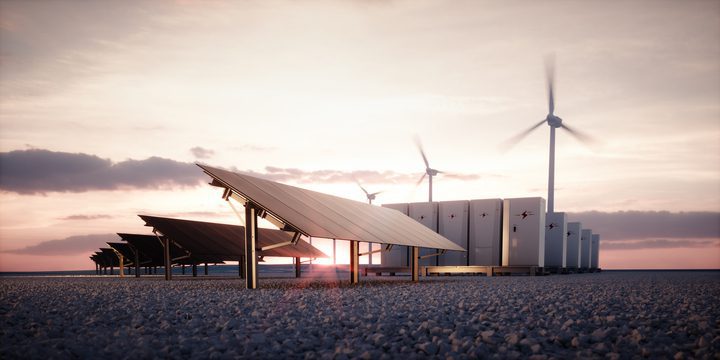Harnessing the Benefits of Energy Storage to Reshape Sustainable Operations
In today’s challenging business environment, it is paramount for organizations of all disciplines to reduce operating expenses while creating processes to meet strict greenhouse gas emissions standards. There is a worldwide focus on utilizing the full power of renewable energy and distributed assets to help organizations become more sustainable and decarbonized.
Energy consumers, producers, utilities, and grid operators are all seeking to control energy usage, reduce electricity costs, and improve regulatory compliance. Renewable energy producers are also challenged with improving utilization factors and managing the levelized cost of electricity (LCOE).
To succeed, consumers require efficient solutions to manage energy storage assets such as accurate decision-making tools, technology readiness, and understanding of the complex energy ecosystem.
Let’s explore some of the benefits of energy storage and how leveraging recognized best practices for energy management can help build a bridge to clean-energy operations in the industrial sector and beyond.
Increase Profits
Efficient and impactful energy storage solutions should be able to leverage best practices for energy management such as energy arbitrage and demand management to deliver flexibility and control of when energy is purchased and used.
For example, if a generator fails or goes offline for any reason, the energy storage system (ESS) reduces the need to bring additional, non-renewable power generators online (Figure 1). By utilizing energy storage during brief outages, businesses can avoid costly disruptions and continue normal operations. Organizations can also avoid peak rates or demand charges when deploying energy from secured storage units. The result is increased asset profitability and improved business results.

Consider Security
Cybersecurity is a major area of concern for power utilities due to the role they play as operators of critical infrastructure systems and providers of essential services. Specific concerns are related to the rising interconnected nature of infrastructure and systems, and the growing number of attacks targeting utility operations.
There are several industry best practices that will improve energy storage cybersecurity and the most important of them is defense-in-depth approaches, whereby multiple security features are layered in the asset or network. Maintaining a robust cybersecurity program is critical to defending ESS assets and networks from evolving threats.
However, organizations must move beyond reactive measures and take a forward-looking approach that integrates the security function into critical decision-making and the accompanying increase in infrastructure and geographic complexity of those decisions.
Advanced control technologies can enable robust network and physical security, as well as enhanced cybersecurity protection. This in turn can help to ensure energy assets are reliable and have the highest level of availability.
Enhance Performance
Balancing highly agile capacities and energy storage is essential for the stable operation of any organization’s energy ecosystem. And the advancement of ESS technology offers the ability to meet these crucial requirements.
Consumers should consider an end-to-end approach because it is an effective alternative to standalone point solutions for monetization of battery assets. This approach includes the full hardware and software technology offering and outcome guarantees that are needed to significantly reduce charges from transmission and distribution (T&D) service providers. Artificial intelligence–based demand management, peak prediction, and value stacking optimization can also help to keep pace with changing market conditions.
By leveraging the above best practices, energy service providers can increase their rate of return from technology investments while de-risking their capital expenditure (CAPEX) and operating expenditure (OPEX) cash flow.
Grow Sustainability Efforts
In short, energy storage enables electricity to be saved for later and controls when, where, and how it is deployed (Figure 2). This in turn allows for flexibility, more efficiencies, and new capabilities for the electric grid, ultimately reducing the amount of greenhouse gas emissions produced.

Advanced analytics, monitoring, and operational capabilities offered by ESS technology can also help extend the self-consumption of renewable energy, reduce the use of diesel generators or gas turbines, and improve efficiency of cogeneration units.
As the energy supply industry continues to make a transition to cleaner solutions with low-carbon or no-carbon resources, ESS technology can help the supplying parties evolve, creating space for more sustainable ways of deploying energy.
Conclusion
While there are a multitude of reasons for organizations to utilize energy storage, there are plenty of benefits associated with each driver, including financial savings, emergency backup energy sources, more sustainable operations, and maximizing an existing set of assets, just to name a few.
There’s no question renewable energy is reshaping how consumers are approaching energy usage and management. In fact, a majority of power investments will be in this sector during the coming years and renewables will account for more than 70% of global electricity generation growth by 2023.
Around the world, consumers, producers, utilities, and grid operators are facing increasing pressure to improve upon their energy usage, and as such, the expectation to manage energy consumption, reduce electricity cost, and improve sustainability is more important than ever.
Honeywell offers a full suite of products tailored to the distributed energy value chain. Our scalable and evolutionary technology allows us to provide outcome-based performance guarantees around energy, carbon footprint, and demand management. Ultimately, that can enable reliance on fewer non-renewable sources of energy while providing a resilient and reliable solution for those seeking to implement their own ESS. Throughout the renewable and clean energy industries, Honeywell’s unique ESS technology minimizes installation and commissioning time, making it ideal for quick deployment and a fast return on investment (ROI).
To learn about Honeywell’s energy storage solution offerings, please visit: https://process.honeywell.com/us/en/industries/renewables-and-distributed-assets.
—Prudence Hoffman is senior manager, Technical Solutions—Renewable Energy, with Honeywell Process Solutions.